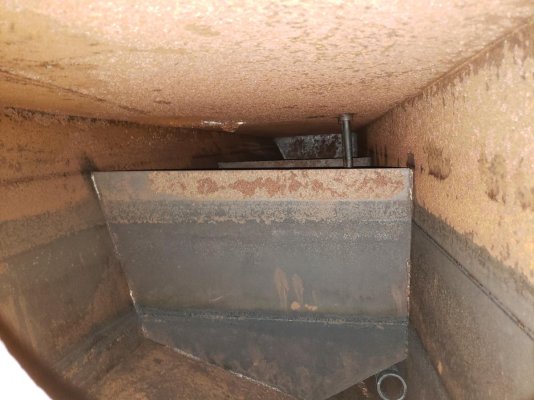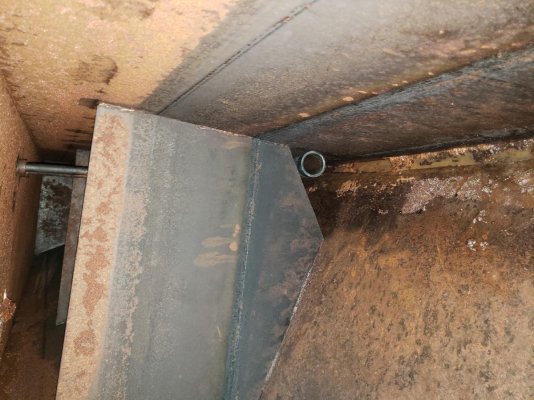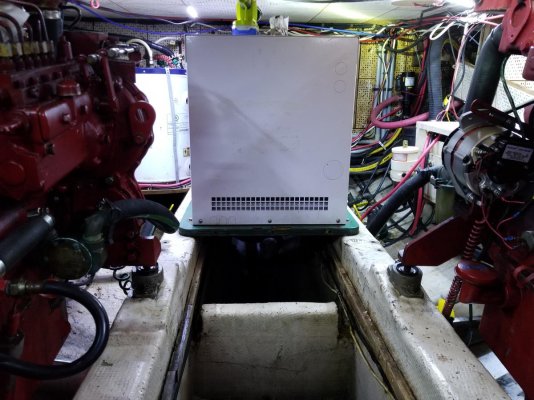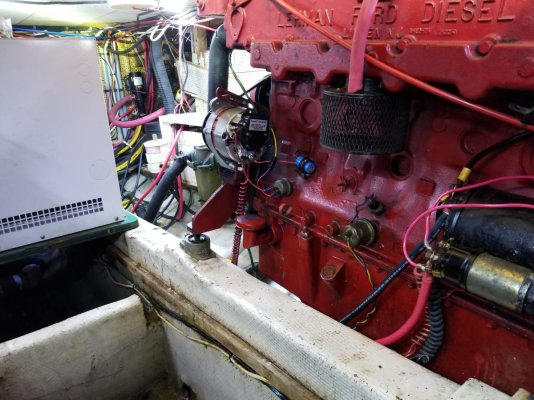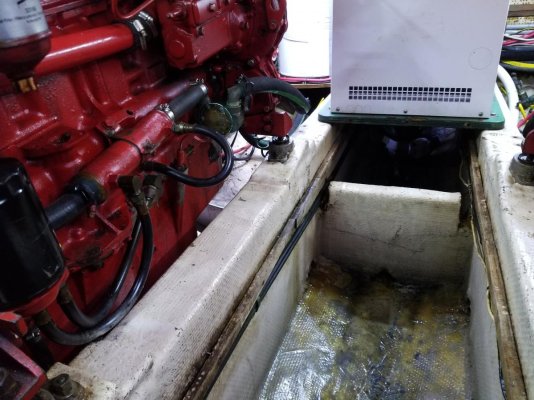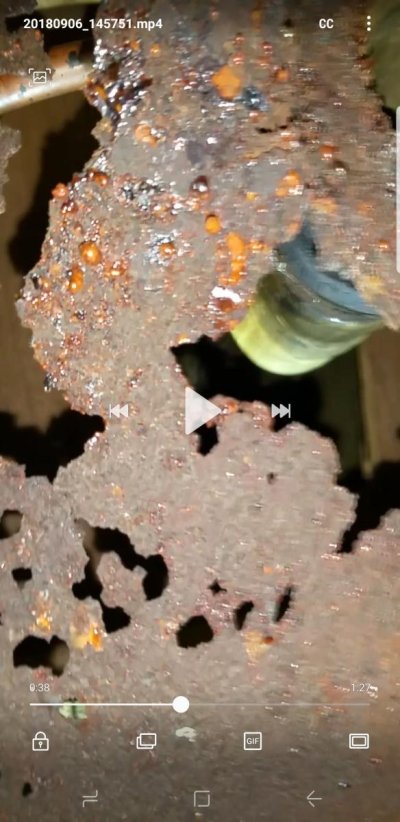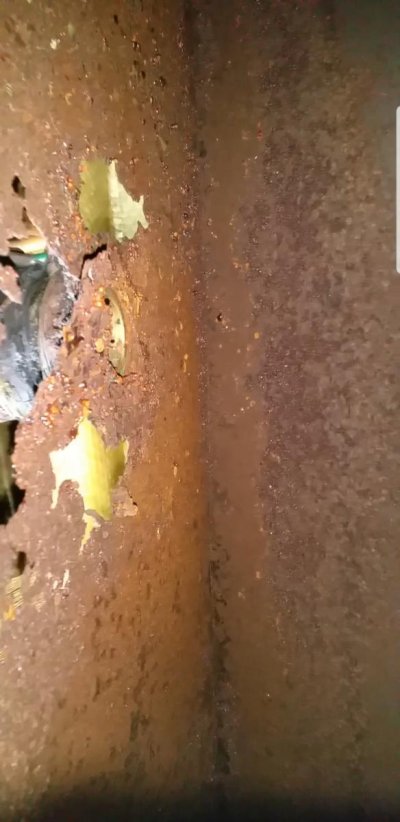Nopistn
Senior Member
So one of the fuel tanks on my C&L 37 looks like swiss cheese around the fill neck and generally has a lot of rust on the top.
No one seems to think repairing this tank is worthwhile.
I just drained and pulled the inspection port off and in the interior I found 2 baffles and it looked pretty good overall.
This boat has 2 engines and replacing the tank would definitely require removing an engine, if not both and the generator.
I could probably get a few 40ish gallon poly tanks in there maybe with just moving the generator a bit... or I could cut cut the baffles out and put a bladder in.
The current tank is about 150 gallons.
Let me know if yall have any advice or ideas!
No one seems to think repairing this tank is worthwhile.
I just drained and pulled the inspection port off and in the interior I found 2 baffles and it looked pretty good overall.
This boat has 2 engines and replacing the tank would definitely require removing an engine, if not both and the generator.
I could probably get a few 40ish gallon poly tanks in there maybe with just moving the generator a bit... or I could cut cut the baffles out and put a bladder in.
The current tank is about 150 gallons.
Let me know if yall have any advice or ideas!

